
Fractured Futures – Alberta Conundrum
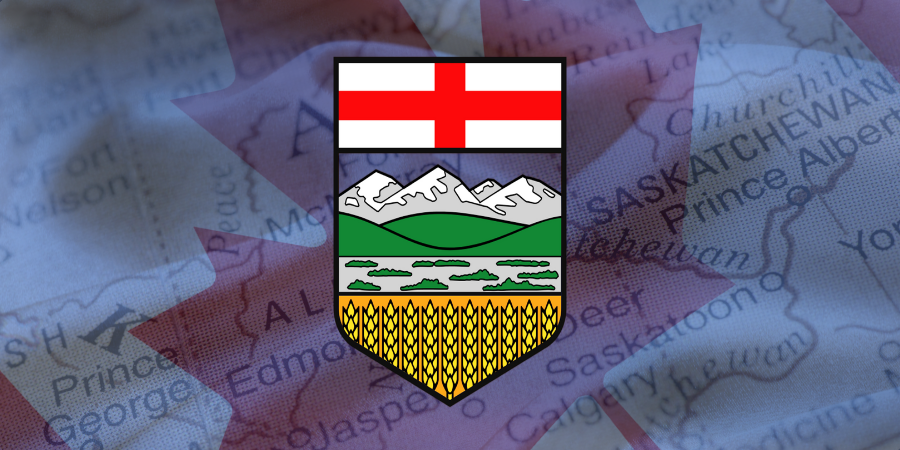
Three Troubling Paths for Alberta and Why Unity Still Matters
Let’s not sugarcoat it. Alberta’s frustration with Confederation isn’t new. It’s been building for decades, over pipelines, policy, equalization, and the sense that Ottawa just doesn’t get the West. But lately, the volume’s gone up. The talk has shifted from reform to separation. And while most of it is posturing, the fact that we’re even entertaining the idea of breaking up the country should make us all stop and think.
What follows are three possible futures. Not predictions, provocations but completely fictional scenarios. An alternate history or future. They’re deliberately uncomfortable because they need to be. These are scenarios built around that 51% line, where the margin between order and chaos is thin, and the consequences are anything but hypothetical.
Each one explores a different path Alberta might take if separatist sentiment spills over into action. One ends in uneasy compromise. Another in constitutional crisis. The last in outright collapse, foreign meddling, and a fractured nation stumbling into chaos.
None of them end well.
But they are possible, if we keep letting extremism shape the conversation and ignore the very real fractures that exist across this country. These stories aren’t here to scare you. They’re here to remind us what’s at stake.
Because unity isn’t just about waving a flag or singing a national anthem. It’s about showing up. It’s about listening, especially to Indigenous nations who hold legal and moral authority this country has too often sidestepped. And it’s about rejecting the toxic voices that trade in division, outrage, and conspiracy to boost their own platforms while the nation burns.
The truth? Alberta isn’t likely to leave. But we’d be fools to assume that makes us safe. If we want to keep this country together, not just technically, but meaningfully, we need less posturing and more pragmatism. Less rhetoric and more respect. More truth, less tribalism.
So read on. Reflect. And ask yourself not which scenario is most likely, but what we can do now to make sure none of them happen.
Canada’s strength isn’t in how loudly we argue. It’s in how stubbornly we choose to stay together.
Scenario 1: Peaceful but Contentious Divorce
After Alberta pushed through its Sovereignty Act, The Premier didn’t wait long, they announced a province-wide referendum on independence. The vote wasn’t a landslide, but 51% was enough to tip the balance. Years of frustration over equalization, federal control, and a deep-rooted sense of Western alienation finally boiled over.
Some Albertans cheered. Others mourned. Towns, families, and friendships split overnight.
Ottawa, caught off guard, called the move unconstitutional but stopped short of a hard no. The federal government, held together by a shaky coalition under the PM, was already limping through an economic slump and legislative deadlock. They couldn’t afford a full-blown crisis. So, reluctantly, they agreed to talks.
The world took notice. The UN offered to mediate. Norway and New Zealand stepped in as neutral observers, trusted for their calm diplomacy.
But the process hit a wall fast.
Alberta’s Indigenous leaders weren’t having it. Representatives from Treaties 6, 7, and 8 made it clear, their agreements were with the Crown, not the province. Those treaties didn’t vanish because 51% of Albertans had a moment. Legal challenges poured in, both here and abroad, demanding Indigenous sovereignty be recognized before Alberta could redraw any lines on a map.
The Premier saw the writing on the wall. If they didn’t bring First Nations on board, their whole plan would collapse. So Alberta offered something bold: a federated model inspired by Europe, semi-autonomy for Alberta, and full administrative control for Indigenous nations over their own territories, protected under federal oversight.
The negotiations were brutal. Months of tense, behind-closed-door debates focused on resource rights, governance, and money. Finally, a deal took shape. Alberta wouldn’t fully leave, but it would gain EU-style autonomy over finances, trade, and internal policy. Defense and diplomacy? Still a federal job.
In parallel, First Nations secured a landmark agreement, real self-government, control over land and resources, and a direct cut of profits. It wasn’t perfect, but it was unprecedented.
Markets calmed. Canada, for a brief moment, was praised for avoiding the kind of internal collapse that other nations might have stumbled into. But peace didn’t mean unity.
In Alberta, the divide stayed raw. Calgary and Edmonton became flashpoints, mass protests, competing flags, and endless debate. Rural areas stayed mostly pro-independence. The cities didn’t.
And across the border, the U.S. was watching closely. Their economy was struggling. Their energy needs were climbing. With Canada appearing weak and Alberta suddenly standing on its own feet, American pundits and politicians started talking nonsense, economic integration, joint security deals, even more annexation taunts.
NATO raised an eyebrow. Ottawa beefed up border security and called in favors from allies. Nobody wanted a resource war. But everyone knew what was at stake.
Meanwhile, Saskatchewan took notes. Quebec dusted off its old playbook. National unity turned from a policy goal into a crisis management operation. Ottawa scrambled, throwing money and projects at the problem, trying to keep the rest of the country from following Alberta’s lead.
The final agreement was signed in Ottawa in a carefully staged ceremony. The Premier called it a win for democracy. Indigenous leaders were cautiously hopeful. The PM looked like someone who’d just defused a bomb, temporarily.
But the hard part was just starting.
Alberta now had to run a quasi-nation. Indigenous governments had to turn legal victories into working systems. And Canada? Canada had to survive the storm without cracking apart.
And through it all, the world watched. Not because we were perfect, but because somehow, we hadn’t yet lit the whole place on fire.
Probability: Low
While the Premier has indicated openness to a citizen-led referendum on separation, they personally do not support secession. Recent polls show that only about 30% of Albertans would support independence if a vote were held today. The Clarity Act requires a clear majority for any province to secede, making a peaceful and negotiated separation unlikely under current circumstances.
Scenario 2: Conflict and Constitutional Crisis — a Line in the Snow
It started with a vote. Barely a majority. But that didn’t stop the Premier. Within hours of winning the independence referendum, they declared Alberta sovereign, unilaterally. No negotiations. No waiting. Just a middle finger to Ottawa and a constitutional crisis no one was ready for.
Ottawa responded hard and fast. The Prime Minister called it what it was, illegal. Then they called in the military.
Canadian Armed Forces units from Calgary and Wainwright rolled out to lock down key federal sites, refineries, pipelines, airports, and any other asset Ottawa could still claim. Federal cops backed them up. CAF deployed under Aid to Civil Power, but everyone knew what it meant: the gloves were off.
Alberta didn’t sit still. The province mobilized sheriffs, security teams, and volunteer militias wrapped in provincial flags and “freedom” slogans. They moved just as quickly, seizing control of government buildings, energy hubs, and communications centers the feds hadn’t secured. Standoffs broke out in Edmonton, Calgary, and Fort McMurray. No one fired a shot, yet, but the tension was electric. Orders from Ottawa were crystal clear, hold the line, but don’t start a conflict.
Then Indigenous leaders stepped in.
Indigenous governments under Treaties 6, 7, and 8 issue a collective statement, they weren’t taking sides, but they were sovereign. They declared their lands off-limits and set up checkpoints and blockades to keep both the feds and Alberta out. Their message was blunt, treaties are with the Crown, not the province. And any deal about Alberta’s future had to include them.
Canadian Forces commanders tread carefully. Troops rerouted, diplomats were dispatched, and meetings happened in quiet back rooms. Everyone knew one wrong move could ignite something that couldn’t be put out.
Meanwhile, Alberta spiraled.
Edmonton and Calgary lit up with protests, some peaceful, many not. Pro-unity and pro-independence crowds clashed in the streets. Curfews were declared. Emergency powers invoked. CAF boots helped local law enforcement keep things from boiling over, but barely. The military’s job wasn’t to pick a side, it was to stop the bleeding.
Across Canada, people watched the chaos unfold with disbelief. Support for Ottawa wavered. Other provinces, Saskatchewan, Manitoba, started asking, what if we went too? The PM’s coalition looked brittle, frayed by economic stagnation and growing distrust.
Then the U.S. made it worse.
Citing “regional stability” and “energy security,” Washington started moving troops toward the northern border. Publicly it was humanitarian aid. Privately, it looked a lot like pressure. American politicians openly called for deeper resource access, oil, minerals, timber, water. Some even hinted Alberta might be better off as a U.S. state. Canadian officials scrambled to contain it, while NATO quietly raised the alarm.
And then it happened: a deadly explosion at a key energy site near Fort McMurray. Lives were lost. Each side blamed the other. Trust evaporated. The crisis edged closer to full-blown conflict.
Markets crashed. The loonie tumbled. Foreign money fled. Canada’s global standing took a nosedive. The economic engine of the West was now a conflict zone in waiting.
Eventually, under pressure from nearly everyone, Ottawa agreed to international mediation. Norway, Switzerland, Japan and even UNPFII were at the table. Talks started. Ceasefires were arranged. Joint patrols were set up between CAF, provincial forces and First Nations to calm things down. But the core issues, treaty rights, resource control, sovereignty, remained a minefield.
Indigenous nations kept their boundaries tight, blocking movement and holding both sides accountable. They had international support, legal standing, and moral clarity. Alberta had momentum, but not legitimacy. Ottawa had the law, but not the unity.
Sporadic violence flared up. Tensions stayed high. Separatist groups in Saskatchewan and even BC took notes. The fabric of Canadian federalism thinned to threadbare.
In the end, it was the calm professionalism of the CAF that stopped the country from completely tearing itself apart. But the cost was massive, economically, politically, socially. And no one walked away clean.
Canada didn’t fall. But it cracked.
Probability: Very Low
The chances of a full-blown constitutional crisis with Alberta squaring off against Ottawa are slim. Tensions? Sure, they’re real. But so far, both sides have shown they’d rather argue than burn the house down. If things escalate, the CAF would likely step in (I would think) to secure key infrastructure and keep the peace, but outright conflict feels unlikely given the current political climate.
Scenario 3: Alberta’s Chaotic Collapse
The vote was close. Too close. But 51% was enough for Alberta’s government to hit the gas and declare unilateral independence, no roadmap, no planning, just raw ideology wrapped in a flag.
The collapse came fast.
Banks froze Alberta accounts to prevent a full-scale capital flight. That backfired. Panic spread, ATMs ran dry, and within hours, the provincial economy was in freefall. Corporations bailed, Toronto, Vancouver, even Winnipeg became lifeboats. Unemployment spiked. Stores shuttered. Desperation filled the streets.
Ottawa, already hanging on by a thread thanks to recession and a fractured Parliament, deployed the Canadian Armed Forces as a last-ditch stabilization effort. Units from Calgary and Cold Lake rolled in, not to occupy, but to keep the lights on and the bloodshed down. They secured pipelines, power stations, hospitals, highways. Humanitarian triage.
But Alberta wasn’t just breaking apart politically. It was fragmenting physically.
Indigenous nations, the Cree, Blackfoot, Dene, immediately asserted their treaty rights. They set up roadblocks, checkpoints, and declared their lands sovereign. They weren’t interested in playing Ottawa’s or Alberta’s games. These weren’t protests, they were controlled, strategic operations. Alberta’s new leaders couldn’t do a thing about it. The CAF didn’t push, they negotiated, mediated, and backed off when they had to. They knew better than to try to solve 150 years of injustice with tanks.
Then came the militias.
With no unified command and no functioning civil authority, local power vacuums filled fast. Competing armed groups emerged across the province, some defending neighborhoods, others grabbing territory. Calgary and Edmonton became patchwork cities of armed patrols and roving authority. In some places, militias flew independence flags. In others, unity banners. Some just had guns and a thirst for control.
CAF peacekeepers were caught in the middle, trying to protect civilians and hold together a crumbling infrastructure. Food, water, and power distribution faltered. Hospitals overflowed. Thousands of residents fled west or east, flooding into Saskatchewan and Manitoba, overwhelming city services in Saskatoon, Regina, and Winnipeg. Canada was now managing a refugee crisis inside its own borders.
That’s when the Americans showed up.
Under the banner of “regional stabilization,” the U.S. moved fast. Troops and private contractors crossed into Alberta, locking down oil fields, mining operations, and key transit routes. They called it humanitarian aid. But anyone watching knew it was resource extraction dressed in red, white, and blue.
Ottawa scrambled. CAF units were redirected to reinforce border positions, but they were outmatched and overstretched. Diplomatic cables flew. So did veiled threats. NATO allies expressed concern, but quietly. No one wanted to provoke Washington during an election year.
And somehow, amid the wreckage, Canadians found a thread of unity.
Militia groups who’d once been at each other’s throats began to redirect their anger outward. Indigenous communities, who had refused to be pulled into Ottawa’s collapse or Alberta’s gambit, now fiercely resisted foreign intrusion. When American forces clashed with Indigenous patrols, it lit a fuse under the whole region. Small skirmishes turned into guerrilla-style resistance. The CAF, already pulled in three directions, struggled to prevent things from spiraling into full-scale war.
Global media ate it up. “Collapse of the Canadian West” became a headline. Investors pulled out. Canada’s credit rating cratered. The loonie tanked. Public trust vanished.
And still, there was no real plan.
International mediators, Switzerland, Norway, Japan, tried to force a diplomatic breakthrough. Ceasefires were negotiated and broken. Trust was nonexistent. Everyone had competing interests. Alberta wanted autonomy. Ottawa wanted control. Indigenous nations wanted recognition. The U.S. wanted resources. The CAF just wanted to stop the bleeding.
In the end, Alberta’s leap into the unknown didn’t spark a revolution. It triggered a systemic unraveling. What started as a populist power play ended in humanitarian crisis, international embarrassment, and the slow disintegration of Canadian federal authority.
Canada didn’t lose a war. It lost control.
Probability: Extremely Low
A full economic collapse or some U.S. annexation fantasy? Highly unlikely. Sure, there’s always fringe chatter about Alberta joining the States, but most Albertans, and Canadians, want no part of it. And let’s be clear, Ottawa wouldn’t sit on its hands. Any hint of foreign interference would trigger a serious federal response, fast.
Likely Outcome: Rejection of Separation
Probability: High
Let’s be honest, despite the noise, the flags, and the social media saber-rattling, the most likely outcome is this, Alberta stays in Canada.
There’s an high probability, at least, when push comes to shove, the province pulls back from the edge. Not because everyone’s suddenly happy, but because full separation is a logistical and political nightmare. Most Albertans know it. The bluster fades when the bank accounts freeze, the job offers vanish, and the real-world consequences hit home.
The Premier seems to know it too. Their recent launch of the “Alberta Next” panel is a nod to that reality, a way to let people vent, hold some town halls, and reframe the conversation around reform instead of rupture. The messaging isn’t about tearing up the country, it’s about forcing a national conversation. More autonomy. More leverage. Less Ottawa. I guess.
What we’re likely to see instead is a slow grind: pressure, negotiation, constitutional poking and prodding, and the kind of tired, half-finished reforms that patch cracks but don’t fix the foundation. The real danger isn’t separation, it’s erosion. Of trust. Of unity. Of a shared sense of country.
That’s why the conversation matters.
Because, if we keep pretending the grievances aren’t real, or if we laugh off the fringe until it isn’t fringe anymore, we risk sleepwalking into one of those darker timelines.
Alberta’s not leaving tomorrow. But the country still has to decide how to hold itself together. And that job isn’t just Ottawa’s.
It’s all of ours.

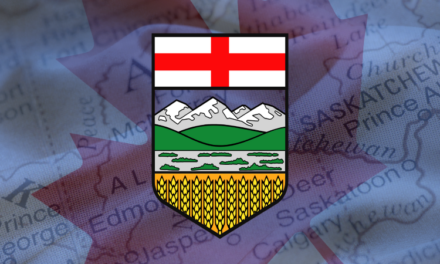



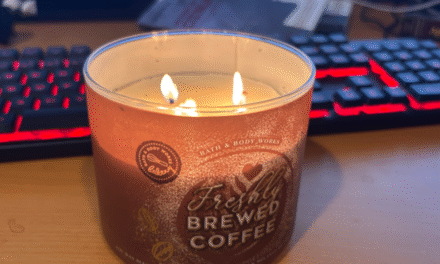




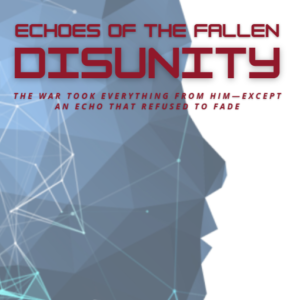

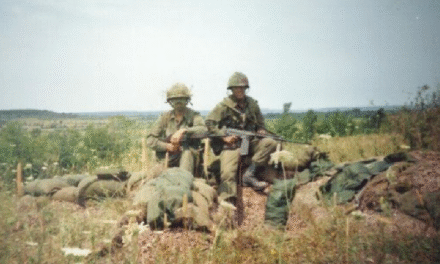
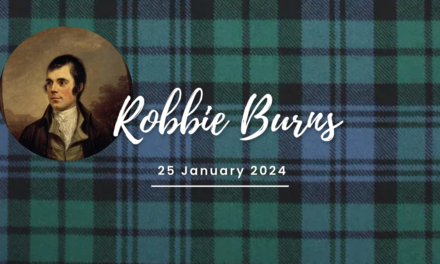





0 Comments